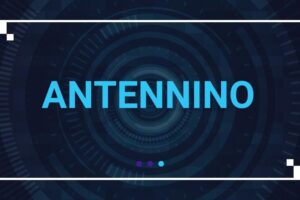Technology
FintechZoom .io: 27 Reasons Why This Fintech News Platform is Revolutionizing Global Finance
Published
5 months agoon
By
Ninja
FintechZoom .io
FintechZoom .io is not just another digital platform—it’s a pulsating nerve center for the global fintech industry. With a mission to democratize financial technology insights, FintechZoom .io delivers real-time news, actionable analysis, and data-rich content that fuels the decisions of investors, innovators, regulators, and everyday readers. Whether you’re a seasoned fintech executive or a curious newcomer, FintechZoom .io is your go-to source for understanding the shifts that shape tomorrow’s finance.
What is FintechZoom .io?
FintechZoom .io is a digital-first publication that covers every corner of the financial technology landscape. With a special emphasis on emerging markets, digital assets, and financial innovation, the platform is designed to serve a diverse readership—from hedge fund managers to startup founders.
The domain “.io” itself hints at its innovation-forward philosophy. Originally associated with tech startups, this extension aligns well with the brand’s identity as a modern, data-savvy news hub that breaks stories before they hit traditional media.
Real-time Fintech News that Matters
One of FintechZoom .io’s strongest suits is its blazing-fast reporting. While many platforms summarize news, FintechZoom .io provides nuanced takes—unpacking what a new regulation means for neobanks or how a crypto dip may affect decentralized lending platforms.
For example, during the recent Bitcoin ETF boom, FintechZoom .io ran detailed explainers, investor reactions, and analyst projections—all within hours of the announcement. That’s the kind of speed and depth today’s fintech enthusiasts crave.
How FintechZoom .io Supports the Global Fintech Ecosystem
Beyond news, the platform acts as a bridge. It connects startups looking for funding with VCs, partners institutions with fintech vendors, and provides insights for regulators trying to keep pace with innovation. Its reports and features help create an informed and dynamic community.
Notably, its “Startups to Watch” series has consistently featured fintech firms that later made headlines—demonstrating FintechZoom .io’s keen industry radar.
Cryptocurrency, Blockchain, and Beyond
FintechZoom .io treats cryptocurrency not as a trend but as a pillar of tomorrow’s financial systems. Coverage includes:
- Daily Bitcoin, Ethereum, and altcoin price analysis
- Regulatory updates from the SEC, ESMA, MAS, and others
- NFTs, DeFi, and Web3 product launches
- Blockchain enterprise use cases in supply chains and healthcare
Readers looking to invest or simply understand the next wave of digital disruption find FintechZoom .io indispensable.
Artificial Intelligence, APIs, and the API Economy
The platform doesn’t stop at digital currencies. FintechZoom .io also dives deep into AI-powered trading bots, robo-advisors, and fintech APIs that are redefining the backbone of banking.
It regularly explores:
- Machine learning in fraud detection
- Open banking and PSD2 implications
- Banking-as-a-Service (BaaS) platforms
Curated by Experts, Not Algorithms
What sets FintechZoom .io apart is its team of editors and analysts. These are not generic contributors. Each story is evaluated for relevance, potential impact, and accuracy. In a world flooded with clickbait, FintechZoom .io offers signal—not noise.
Global Market Insights in One Place
FintechZoom .io provides granular insights tailored to regional contexts. From Southeast Asia’s e-wallet revolution to Europe’s regtech boom, it breaks down complex ecosystems with simplicity.
FintechZoom .io for Professionals and Beginners
You don’t have to be a CFA to appreciate this platform. While it caters to institutional players, it also includes beginner-friendly glossaries, guides, and market explainer videos—making fintech knowledge more inclusive.
Event Coverage and Industry Engagement
With live blogs, recaps, and opinion pieces from major events like Money20/20, Web Summit, and Finovate, FintechZoom ensures you never miss out on key developments—even if you’re halfway across the world.
Security, Transparency, and Trust
Data privacy is front and center. FintechZoom adheres to the highest data protection standards and discloses sponsored content transparently. That builds credibility—and loyalty.
FAQs
What is the primary focus of FintechZoom?
FintechZoom focuses on delivering real-time news, analysis, and insights on financial technology trends worldwide.
Is FintechZoom .io suitable for beginners?
Yes, it offers beginner guides, glossaries, and explainer content to help readers new to fintech.
Does FintechZoom cover cryptocurrencies?
Absolutely. From Bitcoin to DeFi trends, it covers digital assets extensively.
How frequently is FintechZoom updated?
News and updates are published daily, often in real time.
Is there a subscription for premium content?
Yes, there are options for premium access that offer exclusive analysis and reports.
Can I contribute to FintechZoom?
Yes, through guest posts or featured commentary. Submission guidelines are available on the site.
Conclusion and Final Thoughts
In a fast-evolving world of digital finance, FintechZoom is not just keeping up—it’s setting the pace. With its commitment to editorial excellence, diversity of coverage, and user-centric design, the platform is a beacon for anyone who wants to stay ahead of the fintech curve.
Whether you’re building the next unicorn or simply curious about Bitcoin’s next breakout, FintechZoom deserves a place in your bookmarks.
You may like
Technology
Antennino Smart System: Revolutionizing Signal Access
Published
3 weeks agoon
October 6, 2025By
Ninja
Antennino is a compact, smart antenna system designed to facilitate wireless signal reception and transmission in both hobbyist and professional applications. Often favored by DIY enthusiasts and tech tinkerers, it’s an open-source project based on the ESP32 microcontroller, used for building wireless networks, enhancing IoT projects, or improving RF communication. It bridges the gap between low-power wireless systems and customizable antennas.
How Antennino Was Born
Antennino originated from a need to create a versatile and powerful antenna module that could be used in wireless experiments, IoT applications, and mesh network setups. Developed by makers for makers, the idea was to design a compact and scalable RF node that allows anyone to explore radio technologies with minimal barriers.
Core Components of Antennino
At its heart, Antennino uses an ESP32 or similar chip, supporting Bluetooth and Wi-Fi capabilities. It’s accompanied by radio modules like RFM69, RFM95 (LoRa), or NRF24L01 depending on the intended use. These components are mounted on a small PCB that supports modular antennas and power configurations, making the unit highly customizable.
Why Makers and Hobbyists Love Antennino
Antennino empowers creators by giving them control over signal manipulation, making it ideal for DIY weather stations, remote monitoring systems, and home automation projects. With a few lines of code and some hardware soldering, users can build everything from mesh networks to smart sensor clusters.
Integration with IoT Devices
Antennino fits naturally into the world of IoT. Its compatibility with MQTT, Home Assistant, and Node-RED makes it simple to integrate into existing smart home or industrial automation systems. By using wireless protocols like LoRa or Wi-Fi, Antennino can serve as the communication brain of a sensor node or relay station.
Antennino for Wireless Communication
The device excels in long-range, low-power communication. With modules like RFM95 (LoRa), users can achieve several kilometers of range in rural areas. This capability makes it ideal for agriculture, rural networking, and environmental monitoring projects where conventional Wi-Fi or cellular coverage may not reach.
Using Antennino with LoRa
LoRa (Long Range) is one of Antennino’s most powerful features. Its integration allows point-to-point or mesh networks with extremely low energy usage. For example, a LoRa-equipped Antennino node can send environmental data from a remote forest to a base station located miles away.
Open-Source Design Philosophy
Antennino is proudly open-source, meaning all design files, firmware, and instructions are publicly available. This openness invites collaboration, improvement, and widespread adoption. Developers can modify the PCB, tweak the firmware, or add new modules depending on project needs.
Firmware and Software Compatibility
Firmware development for Antennino is typically done through the Arduino IDE or PlatformIO. Code libraries for LoRa, Wi-Fi, and MQTT are well-supported, and the system is Arduino-compatible. With this, users can quickly adapt community libraries to build custom firmware tailored to their use case.
Mesh Networking Possibilities
Antennino’s flexibility makes it ideal for mesh networking—systems where multiple nodes communicate with each other without central control. This enables coverage in large or remote areas like farms, mountains, or disaster zones. Each Antennino unit can be programmed to act as a relay, strengthening the network.
Powering Antennino in the Field
Antennino supports a range of power sources, including USB, lithium batteries, and even solar panels. Its low-power consumption ensures long operation times, even in off-grid setups. This is critical for environmental monitoring stations or smart agricultural sensors in remote locations.
Custom Antenna Configurations
One standout feature is the ability to attach various antenna types based on project requirements. Whether it’s a helical antenna for directional signals or a whip antenna for broad coverage, Antennino’s SMA or u.FL connectors provide ultimate freedom in customizing signal reach and direction.
Antennino in Educational Projects
Schools and universities have embraced Antennino as a tool for learning about wireless systems, IoT, and embedded programming. Its affordability, open documentation, and compatibility with educational tools like Arduino make it a perfect fit for STEM projects and classrooms.
Security Considerations
Antennino can be programmed with secure communication protocols like AES encryption for LoRa, TLS for MQTT over Wi-Fi, and private key authentication. This makes it suitable even for sensitive applications like health monitoring or secure data logging.
Real-World Use Cases
From monitoring vineyard soil moisture to managing bee hives in rural zones, Antennino is proving its versatility. Some users have even deployed it for off-grid internet solutions or amateur satellite tracking, showcasing the system’s adaptability and technical strength.
Community and Documentation Support
Antennino thrives because of its active community. Forums, GitHub repositories, and instructional YouTube videos support users at every level. If you hit a roadblock, chances are someone’s already found a solution or is willing to help out.
Future Developments and Upgrades
The Antennino platform continues to evolve, with upcoming versions expected to support newer chips like the ESP32-S3, and additional protocol integrations like Zigbee or Matter. This continuous development ensures that Antennino stays relevant in an ever-changing tech landscape.
Cost-Effective Prototyping
Unlike commercial IoT platforms that can be costly and restrictive, Antennino allows rapid prototyping on a budget. Makers can test, deploy, and refine systems with minimal financial risk, which is especially beneficial for startups or student-led tech initiatives.
Environmental Impact and Sustainability
Because of its support for solar panels and low-energy operation, Antennino supports environmentally sustainable projects. Whether you’re tracking forest growth or optimizing irrigation, it helps reduce power consumption and supports green tech efforts.
Conclusion
Antennino is more than just an antenna module—it’s a robust, flexible, and open-source toolkit for exploring wireless communication. Whether you’re a beginner interested in IoT or a professional building industrial networks, this tiny device offers powerful capabilities in a compact form. Its affordability, community support, and versatility make it a game-changer for wireless experimentation.
FAQs
Can Antennino be used without programming knowledge?
Basic programming knowledge is helpful, especially with Arduino, but many ready-to-use firmware examples are available.
What is the maximum range of Ante’nnino?
With LoRa modules, Antennino can reach several kilometers in open areas, depending on the antenna and environment.
is Ant’ennino compatible with Raspberry Pi?
Yes, Ant’ennino can communicate with Raspberry Pi over serial or network interfaces, making them ideal teammates.
Can I use Anten’nino for commercial applications?
Absolutely. Many commercial IoT deployments use Antennino thanks to its open-source license and flexible design.
Where can I buy or build an Ant’ennino?
You can build one from open-source plans on GitHub or buy pre-assembled boards from online hobby electronics stores.
Technology
Figgs AI: Revolutionizing Smart Business Intelligence
Published
4 weeks agoon
September 29, 2025By
Ninja
In a world overflowing with data, the ability to extract value from information has become a business superpower. Figgs AI is a next-generation artificial intelligence platform transforming the way organizations handle data, decision-making, and growth. With powerful machine learning algorithms and user-friendly interfaces, Figgs AI is bridging the gap between raw data and actionable insights.
What Is Figgs AI?
Figgs AI is a cutting-edge artificial intelligence system designed to assist businesses in harnessing the full potential of their data. It integrates advanced analytics, machine learning, natural language processing (NLP), and business intelligence (BI) tools into a unified platform. This makes it a one-stop solution for data-driven decision-making.
The Evolution of Business Intelligence
Business intelligence has evolved from traditional reporting tools to dynamic AI-powered platforms. Earlier, BI systems could only display historical data. Today, tools like Figgs AI offer predictive analytics, automation, and real-time insights that help businesses stay competitive in fast-changing markets.
Core Features of Figgs AI
Figgs AI is built with several high-performance features:
Real-time data processing
Predictive analytics
No-code model building
Natural language query support
Seamless integration with existing tools (like Excel, Tableau, Salesforce)
These features empower teams to work smarter, not harder.
Data Visualization Made Easy
One of Figgs AI’s most appreciated features is its intuitive data visualization dashboard. Even users without a technical background can easily understand complex data patterns through interactive charts, graphs, and heatmaps. This simplicity makes data analysis accessible to every stakeholder.
Machine Learning for Predictive Insights
Figgs AI uses machine learning algorithms to forecast trends and outcomes. For example, it can predict customer churn, inventory needs, or market behavior. These predictions are based on real-time and historical data, allowing businesses to be proactive instead of reactive.
Automating Routine Decisions
One of the standout capabilities of Figgs AI is its automation engine. It can automatically generate reports, send alerts, or even make operational decisions based on predefined rules. This reduces human error and frees up valuable time for strategic thinking.
Integration with Enterprise Systems
Figgs AI is designed to plug into your existing tech stack. Whether you use cloud storage, CRM platforms, or ERP systems, Figgs AI can connect and extract value from all your data sources. Its API-first approach ensures smooth deployment across departments.
Natural Language Processing Interface
Not everyone speaks “data.” Figgs AI solves this with a natural language interface. Users can type queries like “What were last month’s top-selling products?” and receive accurate results instantly. This NLP feature democratizes data access across your organization.
Security and Compliance
With increasing concerns about data privacy, Figgs AI offers enterprise-grade security features. These include role-based access control, encryption, GDPR compliance, and audit logs. Your data stays secure, private, and fully under your control.
Use Cases Across Industries
Figgs AI is not limited to a specific industry. It serves diverse sectors such as:
Retail: Optimizing inventory, pricing strategies, and customer engagement
Finance: Fraud detection, portfolio analysis, and regulatory compliance
Healthcare: Patient trend analysis, diagnosis prediction, and resource planning
Marketing: Campaign performance, sentiment analysis, and audience segmentation
The platform’s adaptability makes it suitable for startups, mid-sized firms, and global enterprises alike.
Boosting Collaboration Across Teams
Collaboration is vital in decision-making. Figgs AI enables teams to share dashboards, annotations, and reports with ease. Real-time updates ensure that everyone is working with the latest data, fostering unified and informed actions.
Cost-Efficiency and ROI
Implementing Figgs AI is an investment that pays off quickly. By automating analysis and reducing decision latency, businesses save on labor costs and minimize errors. Its scalable architecture allows you to pay only for what you use, making it suitable for any budget.
User-Friendly Interface
The platform is designed with usability in mind. A clean interface, drag-and-drop functionalities, and guided workflows make it easy for non-technical users to navigate. No need for a data science degree to operate Figgs AI!
Competitive Advantage with AI
Companies that leverage Figgs AI gain a sharp competitive edge. It allows them to respond to changes faster, understand their customers better, and innovate without guessing. In a data-driven economy, staying ahead means being smart with your information.
How to Get Started with Figgs AI
Getting started is easy. Businesses can sign up for a demo or trial, connect their data sources, and begin exploring insights immediately. Figgs AI offers onboarding support, tutorials, and live customer assistance to ensure a smooth experience.
The Future of AI-Powered Business Tools
AI is the future, and Fi’ggs AI is at the forefront of this transformation. As the technology matures, expect more advanced features like deep learning, automatic anomaly detection, and voice-activated insights. Fig’gs AI is continuously evolving to meet tomorrow’s business needs.
Conclusion
Fig’gs AI is more than just a data tool—it’s a strategic partner in business success. It enables smarter decisions, streamlines operations, and puts the power of AI in everyone’s hands. Whether you’re a startup founder or a Fortune 500 executive, Figgs AI has the potential to transform how you work with data.
FAQs
What makes Figg’s AI different from other AI platforms?
F’iggs AI stands out for its user-friendly interface, natural language query system, and seamless integrations, which make it accessible to all users—not just data scientists.
Is F’iggs AI suitable for small businesses?
Absolutely. Its scalable pricing and ease of use make it perfect for small businesses looking to become more data-driven without huge overhead.
Can Fi’ggs AI be used without coding knowledge?
Yes. Fi’ggs AI offers a no-code environment that allows users to build models and run analyses without writing a single line of code.
How secure is my data with Fig’gs AI?
Fi’ggs AI adheres to strict data security protocols, including encryption, GDPR compliance, and role-based access controls, ensuring your data remains safe.
How fast can Fig’gs AI deliver insights?
Thanks to real-time processing, Figgs AI can deliver insights within seconds after querying, helping businesses make faster, informed decisions.
Technology
Eplus4car: Driving Innovation in Automotive Technology
Published
1 month agoon
September 18, 2025By
Ninja
The automotive world is undergoing rapid transformation, and platforms like eplus4car are playing an essential role in this revolution. As technology continues to reshape the way vehicles are designed, manufactured, and driven, eplus4car has emerged as a symbol of innovation, convenience, and future-oriented mobility. Whether it is through advancements in electric vehicles, integration of smart systems, or improved user experiences, eplus4car represents the synergy between automotive engineering and modern digital solutions.
The Origin of Eplus4car
The concept of eplus4car arose from the growing need to blend mobility with sustainability and intelligence. Traditional cars have long served humanity, but with climate challenges and rising consumer expectations, there was a pressing demand for smarter and greener solutions. Eplus4car was introduced as a bridge between conventional automotive practices and futuristic technologies. It symbolizes not only progress but also the vision of a more connected, eco-friendly, and digitally enabled driving future.
Eplus4car and the Rise of Electric Mobility
Electric mobility is at the heart of global automotive innovation. Eplus4car aligns closely with this movement by embracing sustainable transportation methods. Electric vehicles reduce emissions, cut reliance on fossil fuels, and bring efficiency to everyday commuting. The role of eplus4car in promoting electric mobility is to offer solutions that enhance charging infrastructure, battery performance, and integration of renewable energy sources. This contribution highlights how eplus4car is not just about cars but about shaping an entire ecosystem of clean mobility.
The Digital Transformation of Cars
Cars today are no longer just mechanical machines; they are becoming intelligent companions on the road. Eplus4car embodies this shift by integrating digital tools that redefine driving experiences. Features such as real-time diagnostics, infotainment systems, navigation enhancements, and smart connectivity are reshaping user expectations. Through digital transformation, eplus4car enables drivers to interact with their vehicles in ways that enhance safety, efficiency, and overall satisfaction.
Safety Innovations with Eplus4car
Safety remains the highest priority in the automotive world. Eplus4car supports innovations that improve road safety through technology-driven solutions. Advanced driver assistance systems, real-time monitoring, and predictive analytics allow vehicles to prevent accidents and minimize risks. From automated braking to collision alerts, the technology behind eplus4car empowers cars to not just transport but also protect. This reflects the vision of a future where road safety is significantly improved through intelligent design.
Connectivity and Smart Features in Eplus4car
One of the defining elements of modern vehicles is connectivity. Eplus4car emphasizes seamless interaction between cars, drivers, and external networks. Smart features such as vehicle-to-vehicle communication, integration with smartphones, and personalized settings create a user-friendly ecosystem. This connectivity ensures that drivers remain informed, entertained, and safe while maintaining full control over their driving experience.
Sustainability and Environmental Responsibility
Sustainability is a crucial theme that defines eplus4car. Beyond electric mobility, the platform also focuses on creating vehicles that are more energy-efficient, recyclable, and environmentally responsible. From lightweight materials to green manufacturing practices, eplus4car advocates for an automotive future that balances innovation with ecological preservation. This commitment ensures that vehicles of the future not only perform better but also contribute positively to the planet.
User Experience with Eplus4car
For any automotive advancement to succeed, user experience is vital. Eplus4car understands this by placing the driver and passenger at the center of its vision. Intuitive interfaces, personalized assistance, and comfortable driving environments ensure satisfaction. Whether through ergonomic design or digital interfaces, eplus4car ensures that every journey becomes more enjoyable, efficient, and tailored to user needs.
The Role of Artificial Intelligence in Eplus4car
Artificial Intelligence is one of the most transformative forces in technology, and its influence on the automotive industry is undeniable. Eplus4car leverages AI to predict maintenance needs, assist in navigation, and personalize user experiences. AI-driven algorithms also enhance safety by detecting potential risks before they escalate. The integration of AI within eplus4car proves that the future of mobility lies in intelligent, adaptable, and self-learning systems.
Autonomous Driving and Eplus4car
Autonomous driving is one of the most ambitious goals of the automotive industry. Eplus4car supports this vision by enabling technologies that allow vehicles to navigate with minimal human intervention. Sensors, cameras, and smart algorithms work together to create safer and more efficient autonomous systems. Although full autonomy is still developing, the contributions of eplus4car in advancing these technologies cannot be ignored. It represents a step toward a future where driving may become optional.
Eplus4car in Global Automotive Trends
The automotive industry is influenced by global trends such as sustainability, digitalization, and urban mobility solutions. Eplus4car fits seamlessly into these trends by offering solutions that align with market demands. In urban settings, eplus4car promotes shared mobility and electric fleets. In global markets, it aligns with policies that encourage green technologies. By adapting to these trends, eplus4car secures its relevance and positions itself as a forward-looking automotive concept.
Challenges Faced by Eplus4car
Despite its innovations, eplus4car is not without challenges. Developing infrastructure for electric and connected vehicles requires investment and collaboration. Data security and user privacy also pose significant concerns in the digital age. Additionally, the transition from traditional automotive systems to modern innovations takes time and cultural acceptance. Eplus4car acknowledges these challenges but approaches them with a problem-solving mindset, ensuring that obstacles become opportunities for further innovation.
The Economic Impact of Eplus4car
Eplus4car also plays a role in shaping economic growth. The development of new technologies creates jobs in engineering, manufacturing, and digital services. It also fosters entrepreneurship and startups focused on automotive innovation. By driving investment in research and development, eplus4car contributes to both local and global economies. This economic impact highlights its role not only as a technological concept but also as a growth engine for industries and communities.
Eplus4car and the Customer of the Future
The future customer is tech-savvy, environmentally conscious, and expects personalization. Eplus4car addresses these expectations by creating vehicles and systems that adapt to user lifestyles. From eco-friendly choices to smart connectivity, it provides solutions tailored for a new generation of drivers. This alignment with customer needs ensures that eplus4car will remain relevant as consumer behaviors continue to evolve.
The Cultural Significance of Eplus4car
Automobiles have always been part of cultural identity, symbolizing freedom, status, and progress. Eplus4car adds a new dimension to this cultural narrative by representing innovation and sustainability. For modern societies, it signifies a shift from traditional notions of cars as mere transportation tools to symbols of intelligence, responsibility, and connectivity. This cultural significance reinforces why eplus4car is more than a technological concept—it is part of social evolution.
The Future Vision of Eplus4car
Looking into the future, eplus4car envisions vehicles that are fully electric, highly connected, and capable of autonomy. The roadmap includes integrating renewable energy systems, developing advanced batteries, and creating global networks of smart mobility. This vision is ambitious yet achievable, considering the rapid pace of technological advancement. The future of eplus4car represents a commitment to making mobility safer, greener, and more inclusive for all.
Lessons from the Eplus4car Concept
The journey of eplus4car provides valuable lessons. Innovation must be consistent, and adaptability is crucial. Sustainability is not optional but essential. User-centered design defines success, and collaboration across industries drives progress. These lessons make eplus4car not just a case study in automotive technology but a guide for industries navigating digital transformation.
Why Eplus4car Matters Today
The relevance of eplus4car lies in its ability to address pressing global challenges—climate change, road safety, and urban congestion. It matters because it offers solutions that align with societal values and technological possibilities. In a world searching for balance between progress and preservation, eplus4car provides a roadmap that ensures mobility remains a force for good.
Conclusion
Eplus4car is more than just an innovation in the automotive sector; it is a vision of how transportation can evolve to meet the demands of the future. By blending sustainability, intelligence, and user experience, it creates a model that redefines mobility. From electric vehicles to artificial intelligence and from safety innovations to cultural significance, eplus4car captures the essence of progress. Its journey is a reminder that the cars of tomorrow are not just machines but integral parts of a smarter, greener, and more connected world.
Trending
-

 Blog5 months ago
Blog5 months agoAbraham Quiros Villalba: Complete Information
-

 Entertainment5 months ago
Entertainment5 months agoهنتاوي.com: Your Gateway to Arabic-Subtitled Anime
-

 News5 months ago
News5 months agoDGMNews.com: A Comprehensive Overview of the Emerging Digital News Platform
-

 Blog5 months ago
Blog5 months agoSimpcitt: A New-Age Urban Marvel or a Digital Mirage?
-

 Blog5 months ago
Blog5 months agoThe Historical and Cultural Significance of Tonghou: A Journey Through Time
-

 Technology5 months ago
Technology5 months agoXlecz: Exploring the Potential of a Revolutionary New Concept
-

 Blog5 months ago
Blog5 months agoUnveiling The Life And Journey Of Keilani Bautista
-

 Technology5 months ago
Technology5 months agoErothtos: A Deep Dive into the Forgotten Mythos
